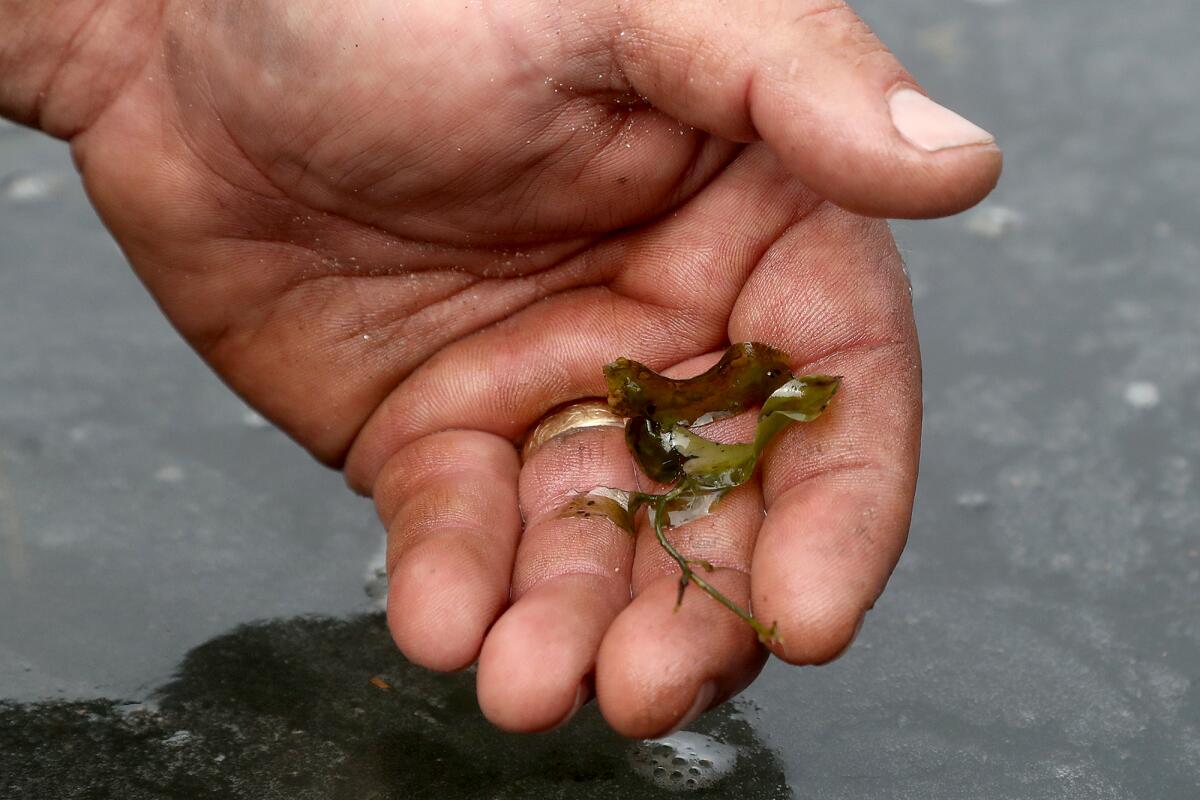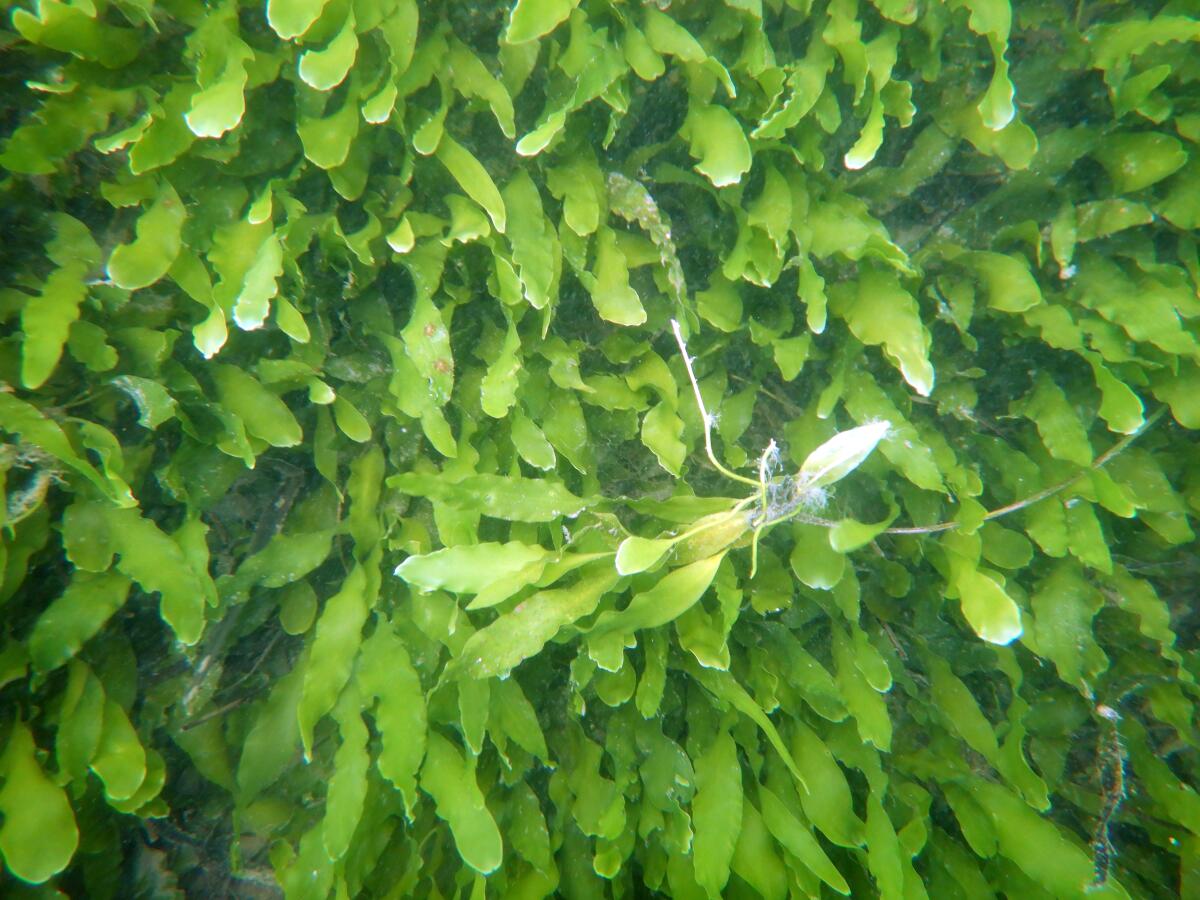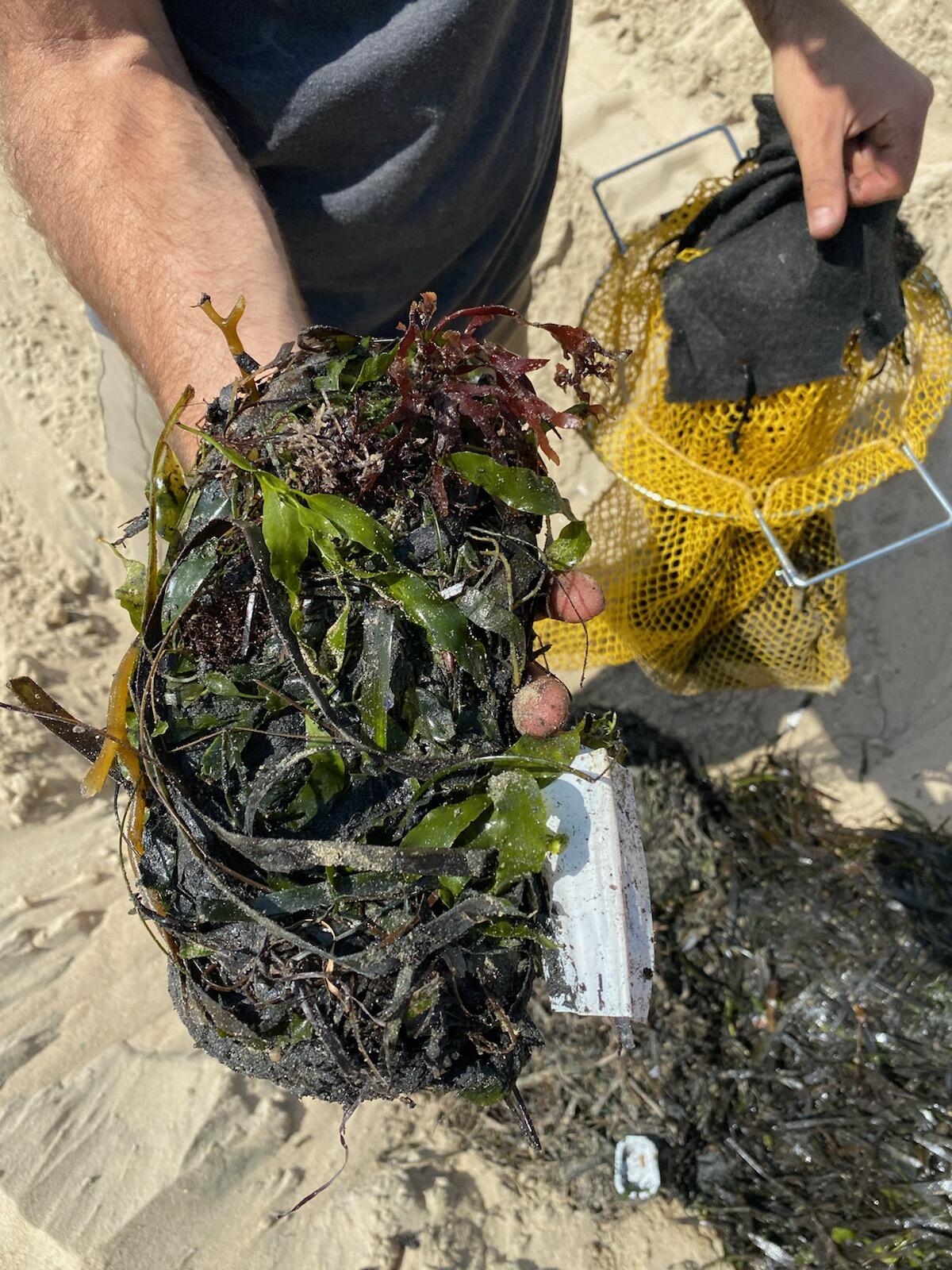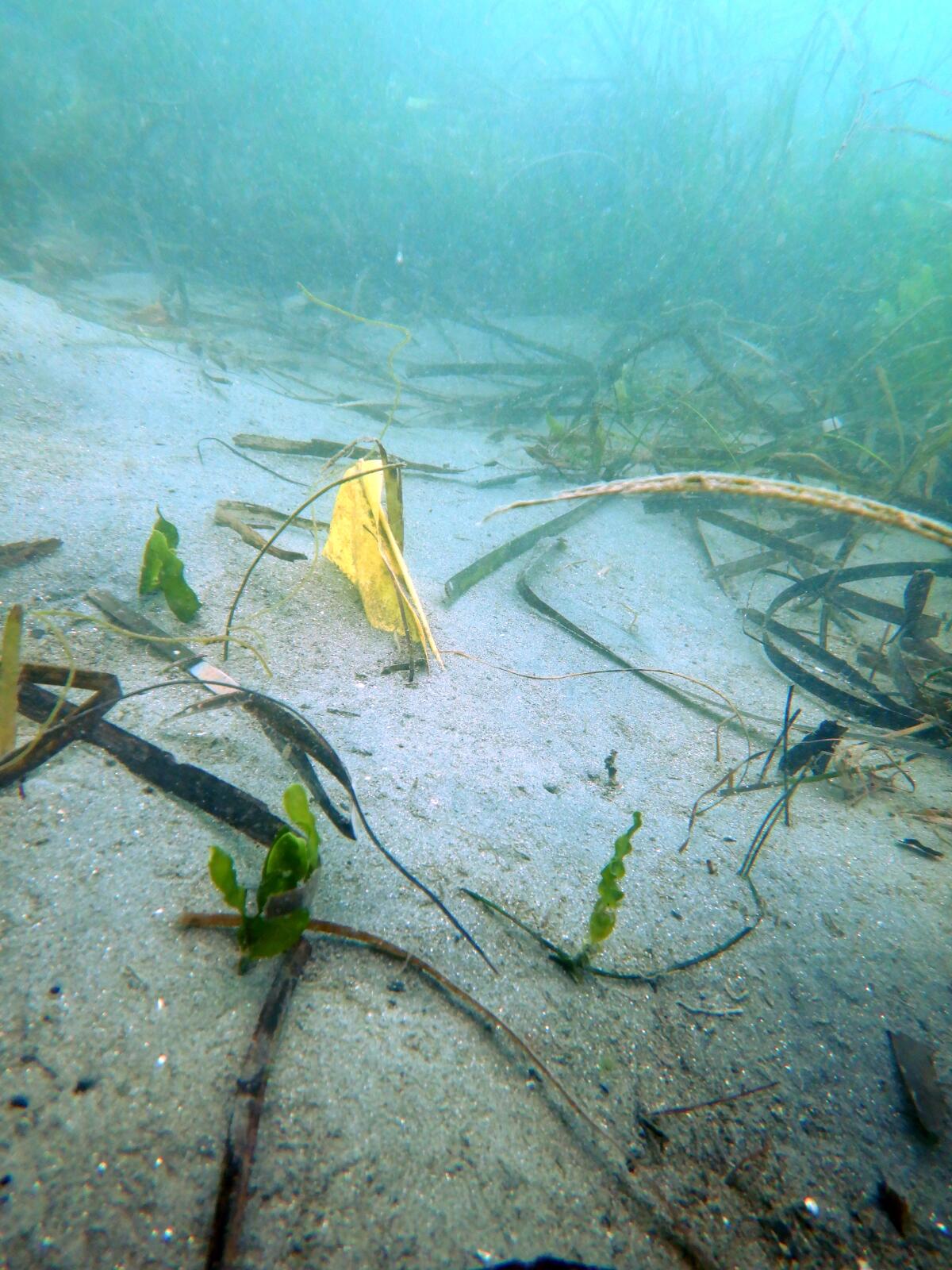Invasive algae species in Newport Harbor is not 100% gone, eradication expected over next few years

- Share via
Last summer, divers set out from China Cove Beach to remove an invasive algae species from Newport Harbor, and the city at the time said it had been removed by way of vacuum pumps that extracted the plant by its roots from the seafloor.
While progress was made, not all of the troublesome algae is gone.
For the record:
9:59 a.m. March 21, 2022This story was corrected to say efforts to remove the plant were primarily funded through the state’s Water Resources Control Board. It originally reported Fish and Wildlife Department was the agency responsible for the funding.
“We did indeed spend a whole week dredging and removing the Caulerpa [prolifera]. We felt we had 100% removal, but the key word is eradication,” said public works manager Chris Miller. “To achieve eradication, which means gone forever and it’s done, that won’t be achieved for a couple of years.
“There’s a certain protocol on what you do after the initial removal process, you have to follow up and do subsequent surveys, which we have been doing every few weeks since July.”
The tenacious algae is native to Florida and other subtropical and tropical locales and is not harmful to humans. It is known to grow quickly and can choke out native seaweeds.
What the surveys have found is that there remain traces of the Caulerpa prolifera hidden in the patches of eelgrass, though Terri Reeder, supervisor of the coastal waters planning and CEQA section at Santa Ana Regional Water Quality Control Board, said the amount is down by 4,000-fold.

“The problem is in June, we had a series of strong spring tides and swells come in that area of the channel, which is very dynamic. There’s a lot of sediment movement there,” said Reeder.
“A lot of the Caulerpa was fragmented and buried, so when the tides came out; some of it would be uncovered. It was an issue of it getting buried and we wouldn’t be able to see it. It would either re-grow up through the sand or it would later be unburied, appear and start growing again. This made it really difficult to find.”
Reeder, who co-chairs the Southern California Caulerpa Action Team, which was initially established for the removal of Caulerpa taxifolia in 2000 and disbanded in 2007, said about 13 diver surveys were conducted by December, but that divers haven’t been out since February to inspect the seafloor because of a shortage in funding.
Efforts to remove the plant were primarily funded through the state’s Water Resources Control Board clean-up and abatement account, which funds only that specific type of work. The funds don’t cover public outreach and scientific studies needed to fully understand the species.
Reeder said the team, composed of several state and local agencies, need more funding to complete Phase I of the eradication of the Caulerpa prolifera from Newport Harbor. To date, officials have spent about $639,588 and estimate an additional $285,000 may be required to continue doing diver surveys and removal of this phase.
Phase II would continue those surveys over the next two to three years to ensure no plants remain buried or any regrowth before it could officially be considered eradicated.
By comparison, it took an estimated $7.7 million — not including staff time — to remove the taxifolia from Agua Hedionda Lagoon near San Diego and Huntington Harbor.

Most of what they’ve found so far are small plants that aren’t fully grown, according to Claire Arre, marine restoration director with OC Coastkeeper.
“We think we’re getting ahead of the curve a little bit. We’re finding more small ones than we have even a few months ago. That is also concerning news,” said Arre.
So far, the teams working on eradication of the algae have only surveyed within China Cove, though Arre noted that the plant is beginning to grow far deeper into the eelgrass than the plant was thought to grow.
Officials say the algae may have spread further into Newport Harbor as it is capable of recolonization through fragmentation — meaning that small pieces broken off of the plant can become viable plants elsewhere — but that it is uncertain at this time.
“It is truly an invasive species. It is displacing our native species and it has no natural predators because it’s not naturally from here. There’s no ecological way of controlling it,” said Arre. “There is no species that limits its growth ... [and] it’s been known the whole genus has this capability.”
Right now, Reeder considers Newport Harbor an infected system.

“Our big concern as the weather gets warmer and boating season is really starting to pick up is that if people … think it’s over, they might end up being part of the spread while we’re still trying to fully eradicate,” said Arre.
Arre describes the efforts in “limbo” while the action team awaits further funding. The city of Newport Beach plans on putting $20,000 toward the surveying efforts, but Miller said city officials attempted to garner support to change an existing state law — AB1334 — that bans the sale of a number of Caulerpa species.
“Back in 2000, this same group advocated for legislative change for a handful of the species to be banned. Now, the species in Newport Beach is Caulerpa prolifera, which was not on that list,” said Miller.
It made sense, he said, to expand it to the whole genus. Efforts, however, died in February. Miller said city officials were not giving up, but added that they’d like to see other parties try as well.
Reeder said people who may encounter the Caulerpa in the water should not touch or try to remove it, but instead take a picture and approximate the plant’s location before notifying the city.
“We appreciate everybody’s patience in the China Cove beach area. We’ve been getting support from the public and we appreciate that,” said Miller. “Hopefully at some point in the near future, this will be eradicated.”
All the latest on Orange County from Orange County.
Get our free TimesOC newsletter.
You may occasionally receive promotional content from the Daily Pilot.




